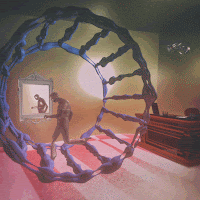Film Fest Ghent is the largest international film festival in Belgium. The festival propagates film and visual culture to a broad audience and supports film and film music talent. Each year, more than 100,000 people visit the city of Ghent for a challenging programme of films, talks, concerts and much more. Film Fest Ghent highlights filmmakers and the collective experience of cinema. Presenting their films to a diverse audience of professionals and film lovers, the festival offers a platform to upcoming as well as established talent.

















































